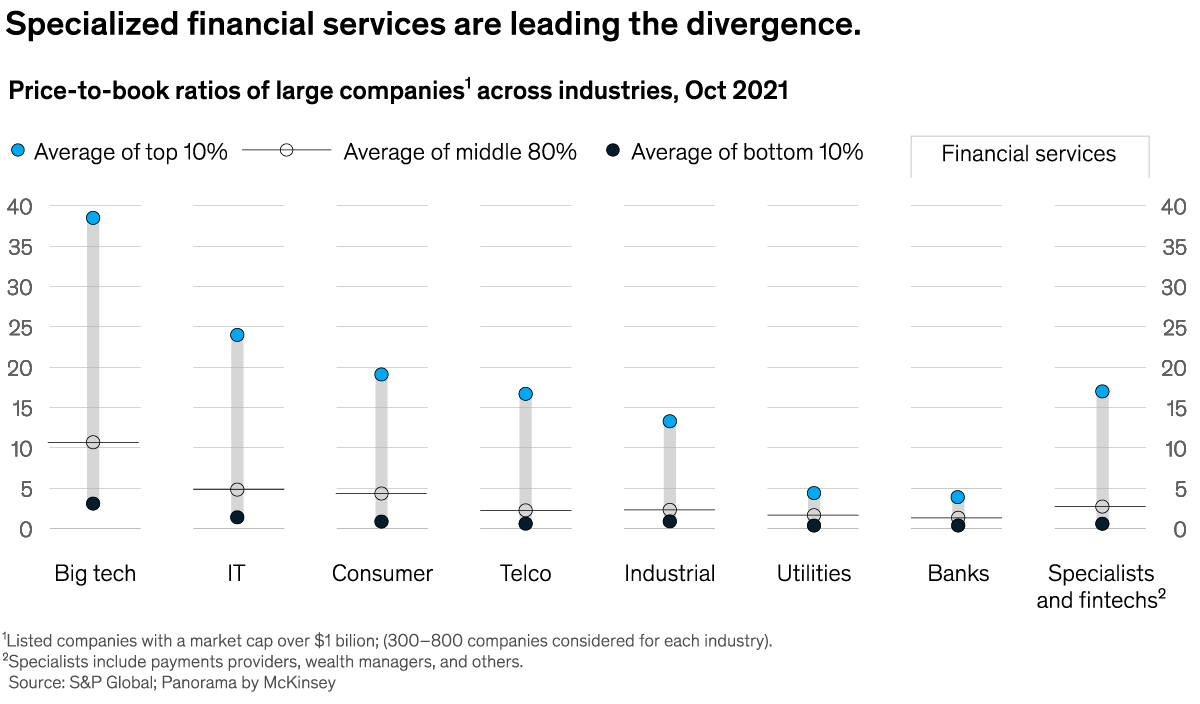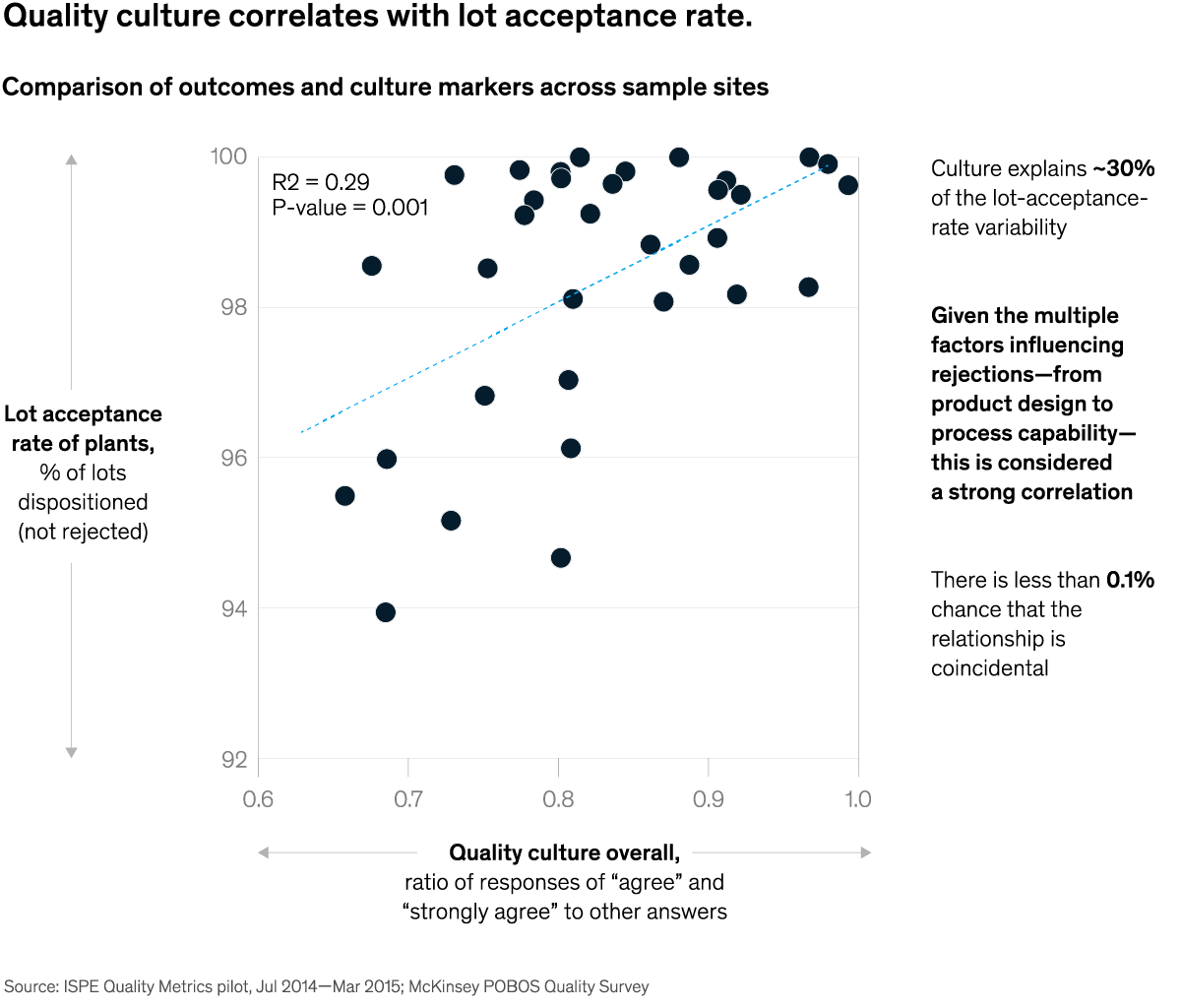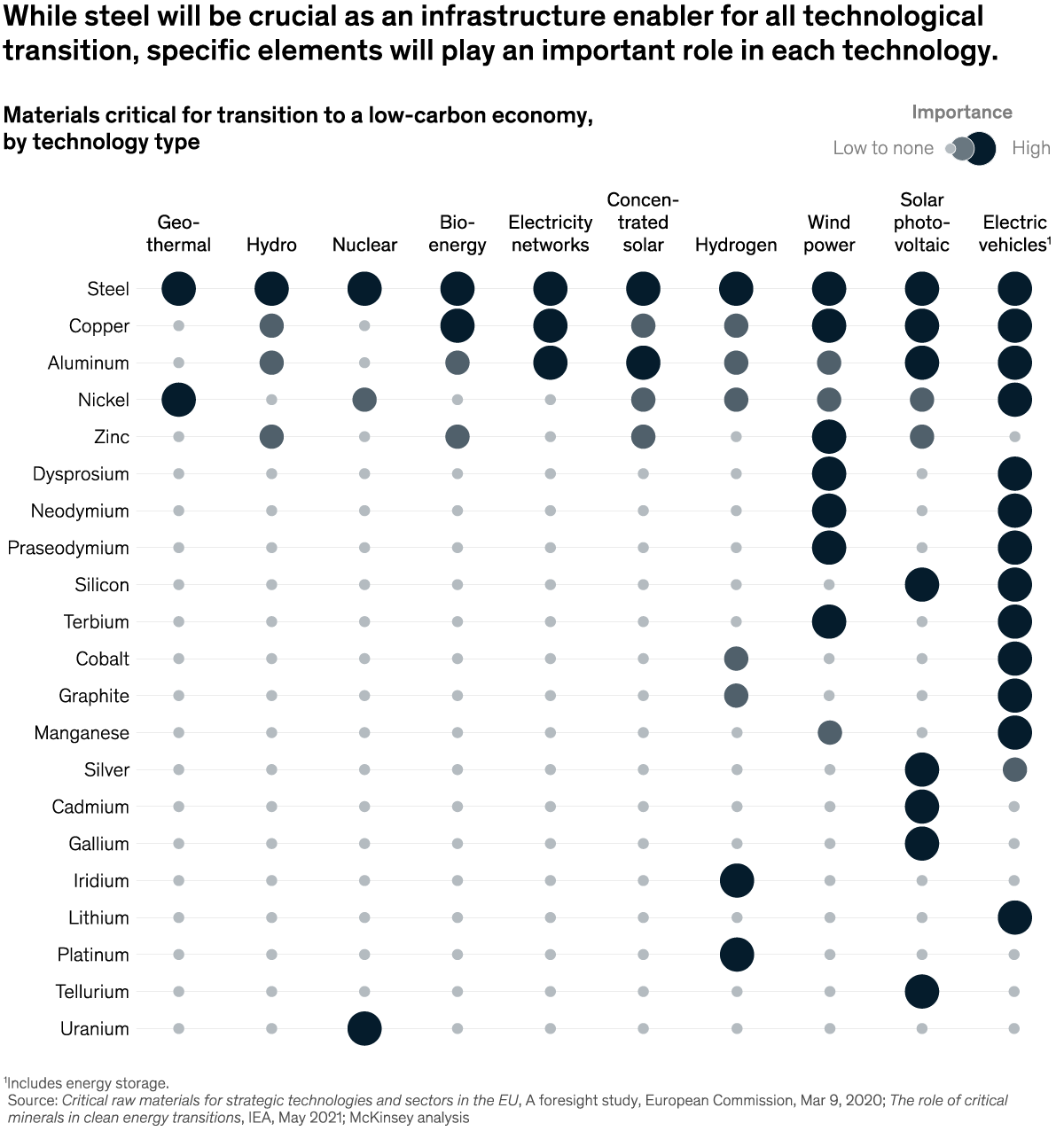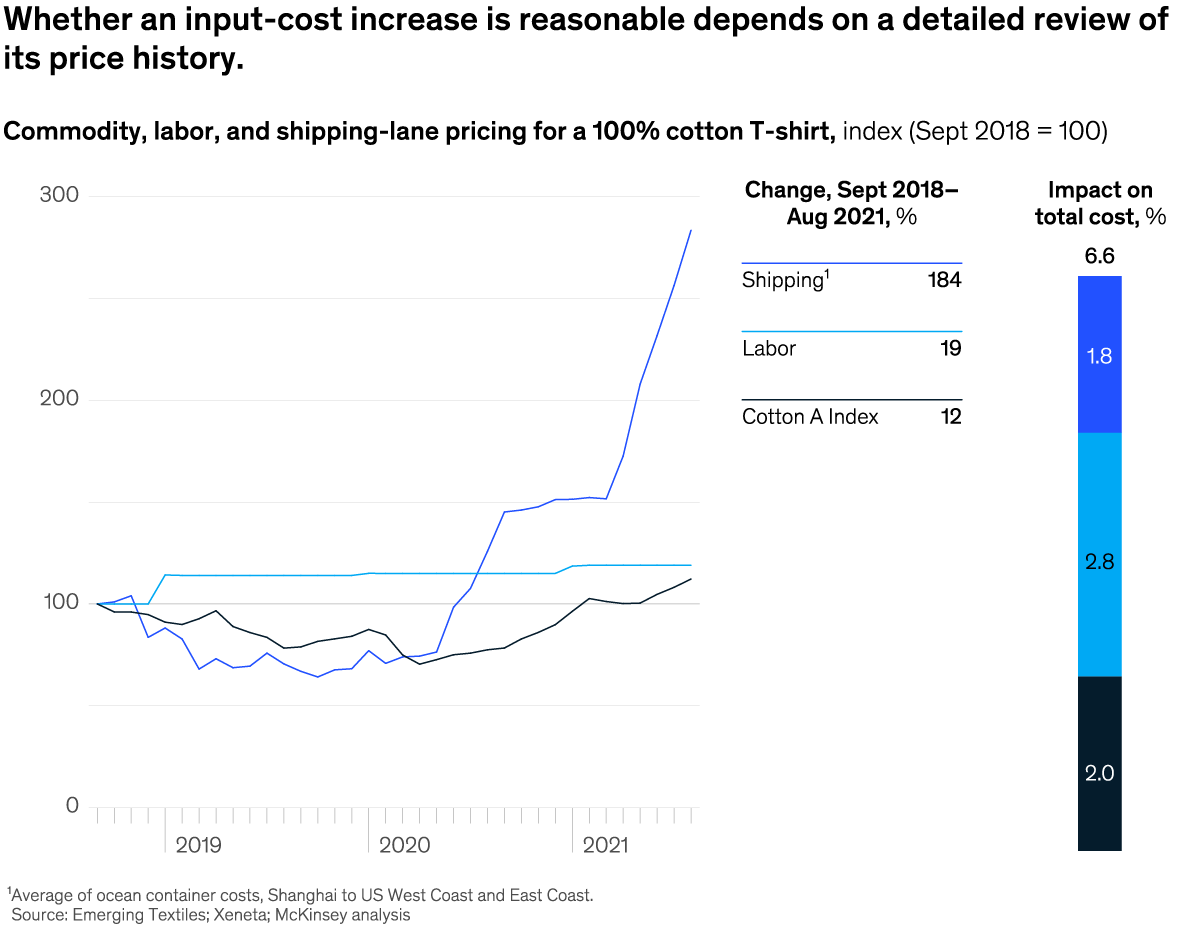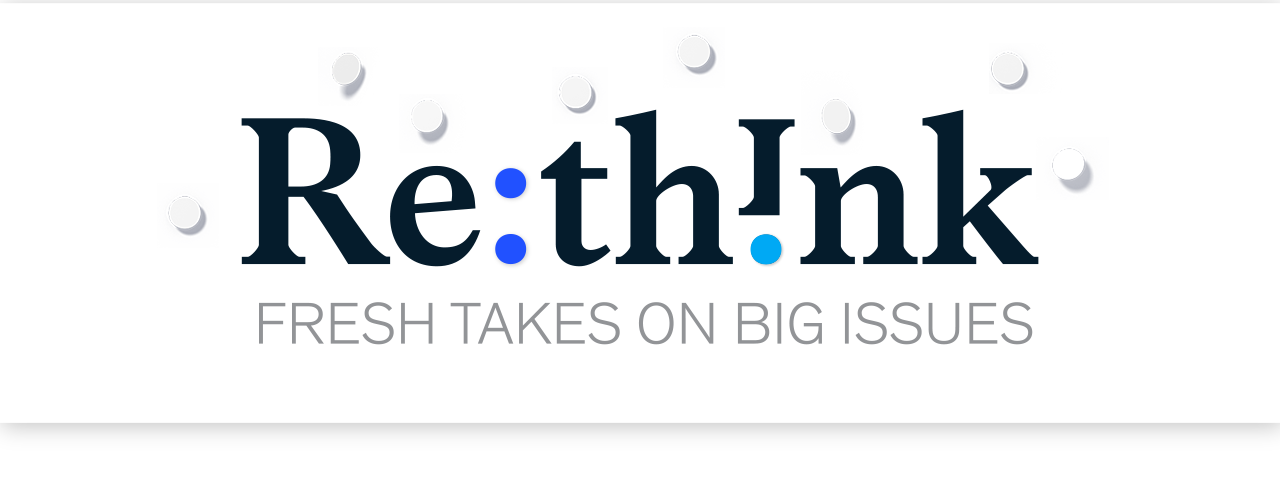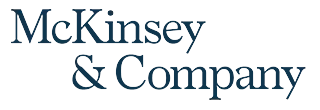Archives
- By thread 5358
-
By date
- June 2021 10
- July 2021 6
- August 2021 20
- September 2021 21
- October 2021 48
- November 2021 40
- December 2021 23
- January 2022 46
- February 2022 80
- March 2022 109
- April 2022 100
- May 2022 97
- June 2022 105
- July 2022 82
- August 2022 95
- September 2022 103
- October 2022 117
- November 2022 115
- December 2022 102
- January 2023 88
- February 2023 90
- March 2023 116
- April 2023 97
- May 2023 159
- June 2023 145
- July 2023 120
- August 2023 90
- September 2023 102
- October 2023 106
- November 2023 100
- December 2023 74
- January 2024 75
- February 2024 75
- March 2024 78
- April 2024 74
- May 2024 108
- June 2024 98
- July 2024 116
- August 2024 134
- September 2024 130
- October 2024 141
- November 2024 171
- December 2024 115
- January 2025 216
- February 2025 140
- March 2025 220
- April 2025 233
- May 2025 239
- June 2025 303
- July 2025 171
-
A military veteran knows why your employees are leaving
the Daily read
Understand the Great Attrition .
Share this email 



AN ARTICLE A DAY, PICKED BY OUR EDITORS 
Amid the Great Resignation, some have posited that employers don’t really know why employees are leaving in droves. But what if that’s just as true for employees themselves? A military veteran who served in Iraq and Afghanistan observes, “This Great Resignation is actually a normal response that most people have never gone through. I’ve experienced this kind of thing after every return from deployment.” That sparked a conversation on attrition, redeployment anomie, confusion, grief, anger, and more. Don’t miss this fascinating back-and-forth for a new lens on how leaders can respond in ways that serve companies and employees alike. — Torea Frey, managing editor, Seattle 
A military veteran knows why your employees are leaving She also knows what you can—and can’t—do about it. Here are three surprising lessons from a veteran of the wars in Iraq and Afghanistan. Understand the Great Resignation 

Quote of the Day “Everybody has personal boundaries but not all of those boundaries have to be limitations. That was a powerful lesson for me.” —Stephanie Hill, executive vice president of Rotary and Mission Systems, Lockheed Martin, in a new interview from McKinsey's My Leadership Journey series 
Chart of the Day See today’s chart 
Also New 

Don’t leave points on the table: An interview with Lockheed Martin’s Stephanie Hill McKinsey sits down with Hill, an executive vice president at the aerospace giant, to discuss the new and emerging challenges of leadership and technology, as well as the importance of work–life balance. Learn to lead 
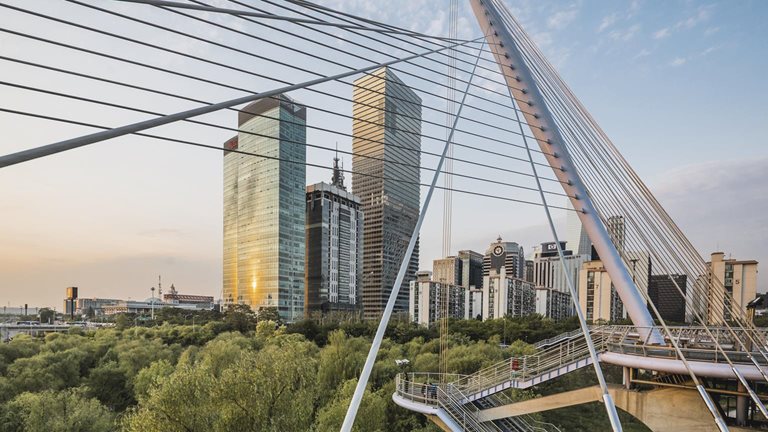

Korean companies need bolder transformation to survive post-pandemic world McKinsey senior partner André Andonian offers insights on the significant transitions companies have faced amid the pandemic and the new initiatives businesses will explore in coming years. Bigger and better 


The McKinsey Crossword: C Minus | No. 61 Sharpen your problem-solving skills the McKinsey way, with our weekly crossword. Each puzzle is created with the McKinsey audience in mind, and includes a subtle (and sometimes not-so-subtle) business theme for you to find. Answers that are directionally correct may not cut it if you’re looking for a quick win. Play now 


Follow our thinking 



Share these insights Did you enjoy this newsletter? Forward it to colleagues and friends so they can subscribe too.
Was this issue forwarded to you? Sign up for it and sample our 40+ other free email subscriptions here.This email contains information about McKinsey’s research, insights, services, or events. By opening our emails or clicking on links, you agree to our use of cookies and web tracking technology. For more information on how we use and protect your information, please review our privacy policy. You received this email because you subscribed to the Daily Read newsletter. Manage subscriptions | Unsubscribe Copyright © 2022 | McKinsey & Company, 3 World Trade Center, 175 Greenwich Street, New York, NY 10007
by "McKinsey Daily Read" <publishing@email.mckinsey.com> - 06:27 - 1 Feb 2022 -
Air taxis could dot the skies by 2030. Here’s what to know.
McKinsey&Company
Ready for takeoff .

Up in the air The news • Faster rides. Investors flooded the market for electric vertical takeoff and landing (eVTOL) aircraft with billions of dollars in 2021. Major airlines have preordered about 1,500 eVTOLs. Some aviation leaders see them as an optimal way to transport their customers to the airport. “You can spend hours on relatively short airport journeys by public transport or sit in a traffic jam,” said one airline CEO. “EVTOLs can do the trip in 30 minutes, and people will pay a premium for that.” [Bloomberg] • Regulatory hurdles. Air taxis will soon ferry people short distances across cities. But first, makers of these small, electric aircraft need to overcome regulatory hurdles. After reviewing more than 100 eVTOL designs and working with aircraft manufacturers, aviation officials are getting ready to finalize safety rules that will determine airworthiness of this new aircraft type. To that end, eVTOL makers in China, Germany, and the US are racing to obtain the certifications that will allow them to operate commercially—some as early as this year. [Economist] 
“Flying taxis will happen; it’s a question of ‘when,’ not ‘if.’” 
Our insights • The 18-minute flight. By 2030, advanced air mobility (AAM) firms could be giving the world’s largest airlines a run for their money. By then, an eVTOL carrier might operate hundreds more aircraft and offer nine times the number of daily flights an airline does today. Picture hopping into an air taxi with up to five other passengers and taking a much shorter flight—just 18 minutes, on average. AAM executives are working to make that dream a reality. Flying taxis will soon provide a safe, affordable, and greener way to travel, they say. • Pilots wanted. With AAM companies each operating about 20,000 flights a day by 2030, thousands of pilots will be needed to fly large fleets of electric aircraft. McKinsey estimates that eVTOL operators will need to attract and train roughly 60,000 pilots by 2028. Furthermore, large numbers of electric aircraft flying frequent, short distances may create operational challenges. To hear from McKinsey experts and industry leaders on what it will take for flying taxis to become a viable mode of transportation, explore our collection page. — Edited by Belinda Yu Fly high 
Was this forwarded to you? Sign up here. Or send us feedback — we’d love to hear from you. 

Follow our thinking 


This email contains information about McKinsey’s research, insights, services, or events. By opening our emails or clicking on links, you agree to our use of cookies and web tracking technology. For more information on how we use and protect your information, please review our privacy policy. You received this email because you subscribed to the On Point newsletter. Manage subscriptions | Unsubscribe Copyright © 2022 | McKinsey & Company, 3 World Trade Center, 175 Greenwich Street, New York, NY 10007
by "McKinsey On Point" <publishing@email.mckinsey.com> - 10:05 - 31 Jan 2022 -
The data-driven enterprise of 2025
the Daily read
7 defining characteristics .
Share this email 



AN ARTICLE A DAY, PICKED BY OUR EDITORS 
Is data embedded in every decision, interaction, and process at your organization? Too often, the answer is no. That won’t cut it if your company aims to be truly data-driven. By 2025, smart workflows and seamless interactions among humans and machines could be as standard as corporate balance sheets, and most employees will rely on data to optimize their work. Whether your enterprise has already made strides or is just beginning its journey, understanding seven characteristics will be crucial to capture full value from data-supported capabilities. Need a guide? A comprehensive new look at the data-driven enterprise of 2025 can help—get the lay of the land, and dive deeper with resources on how to use data for impact. — Torea Frey, managing editor, Seattle 
The data-driven enterprise of 2025 Rapidly accelerating technology advances, the recognized value of data, and increasing data literacy are changing what it means to be “data driven.” 7 defining characteristics 

Quote of the Day —Get smart on what the net-zero transition would cost, and what it could bring, with a new report from McKinsey Sustainability 
Chart of the Day 
See today’s chart 
Also New 

Space: Investment shifts from GEO to LEO and now beyond Investors have recently focused on space ventures in low-Earth orbit, but interest is growing in lunar and beyond orbital regimes. Here’s what you need to know about this ongoing trend. Shoot for the moon 


How to thrive in the global wellness market Consumers everywhere plan to spend more on products and services that improve their health and wellness. Here’s what that means for companies. Take a mindful moment 


Bias busters: A better way to brainstorm Structured conversation during brainstorming sessions removes some of the risks that can thwart honest discussion. Look at it this way 


Follow our thinking 



Share these insights Did you enjoy this newsletter? Forward it to colleagues and friends so they can subscribe too.
Was this issue forwarded to you? Sign up for it and sample our 40+ other free email subscriptions here.This email contains information about McKinsey’s research, insights, services, or events. By opening our emails or clicking on links, you agree to our use of cookies and web tracking technology. For more information on how we use and protect your information, please review our privacy policy. You received this email because you subscribed to the Daily Read newsletter. Manage subscriptions | Unsubscribe Copyright © 2022 | McKinsey & Company, 3 World Trade Center, 175 Greenwich Street, New York, NY 10007
by "McKinsey Daily Read" <publishing@email.mckinsey.com> - 06:21 - 31 Jan 2022 -
Leading better with optimism
Leading Off
Stay hopeful .
Share this email 



ESSENTIALS FOR LEADERS AND THOSE THEY LEAD 
‘A leader is a dealer in hope,’ Napoleon famously mused (presumably, before a career-ending defeat at Waterloo). Particularly in times of crisis, people rely on leaders to inspire and inform, helping them cope with uncertainty and combat feelings of fear and anxiety. Research reveals that people tend to pay more attention to messages that are framed in a positive way. But does maintaining an optimistic outlook help you lead more effectively? This week, let’s look at what optimism has to offer leaders—along with what happens when there’s too much of it. AN IDEA 
In a crisis, balance optimism with reality People expect their leaders to deliver messages of hope and inspiration. But confidence, when untethered to reality, can make leaders appear out of touch or uninformed. If leaders appear exceedingly confident while ignoring obviously difficult circumstances, they can lose credibility. Instead, leaders should practice “bounded optimism”—hopefulness grounded in reality. They can project confidence that the organization will overcome the present crisis but acknowledge that the situation is uncertain. For example, making promises about a return to normal during the COVID-19 crisis may cause disillusionment as the pandemic lingers. Rather, if leaders acknowledge that things may not go back to the way they were, organizations can focus on how best to move forward and help employees regain a sense of equilibrium. 
A BIG NUMBER 43 Even though a positive team climate is the most important driver of psychological safety, McKinsey research finds, just 43 percent of respondents in a McKinsey Global Survey say that their leaders act in ways that foster a positive workplace. When executives demonstrate positive behaviors such as consulting team members and showing support for employees, they create a work environment that is both safer and higher performing. Such organizations are also more likely to innovate quickly and adapt well to change. 

A QUOTE “If you believe that positive things will happen, it boosts your motivation to try harder, and that can change the actual outcome.” That’s Tali Sharot, neuroscientist and professor at University College London, on how optimism can create a self-fulfilling prophecy in our careers. In other words, merely anticipating success may make it more likely for people to attain it, since they will probably push harder for positive outcomes. If you’re a leader who looks on the bright side of life, you’re in good company: one study of more than 1,000 CEOs based in the US found that 80 percent were more optimistic than the average person. 
A SPOTLIGHT INTERVIEW 
Pulitzer Prize–winning writer Thomas L. Friedman wants you to know that he’s an optimist. In a video interview with the McKinsey Global Institute, the foreign-affairs columnist describes how a sense of possibility shaped his journey from growing up in Minnesota to working for the New York Times. “I grew up in this amazing middle-class neighborhood, Saint Louis Park, Minnesota,” Friedman says. “It gave us incredible optimism about possibility.” However, he cautions against taking American exceptionalism for granted: the responsibility lies with leaders to make the right decisions, he explains. 
THE DARK SIDE OF OPTIMISM 
We’re much more likely to expect good things to happen to us than bad. Optimism bias accounts for our tendency to think that our kid is the most talented student in class, our marriage is more likely to last a lifetime, and we will always be in perpetual good health. But when leaders can’t (or won’t) accept how bad a situation is, they end up planning for a scenario that’s much less severe than the one that the company is dealing with. Competition for limited resources may also lead managers to present overly optimistic forecasts of their projects. To combat this, at the start of a project, the team should imagine it has failed and give the reasons why. This exercise might feel uncomfortable, since negativity can be seen as being disloyal. In this case, though, injecting a bit of pessimism may be just what’s needed to reveal potential stumbling blocks and put success within reach. Lead optimistically. — Edited by Belinda Yu, an editor in McKinsey’s Atlanta office 

Follow our thinking 



Share these insights Did you enjoy this newsletter? Forward it to colleagues and friends so they can subscribe too.
Was this issue forwarded to you? Sign up for it and sample our 40+ other free email subscriptions here.This email contains information about McKinsey’s research, insights, services, or events. By opening our emails or clicking on links, you agree to our use of cookies and web tracking technology. For more information on how we use and protect your information, please review our privacy policy. You received this email because you subscribed to the Leading Off newsletter. Manage subscriptions | Unsubscribe Copyright © 2022 | McKinsey & Company, 3 World Trade Center, 175 Greenwich Street, New York, NY 10007
by "McKinsey Leading Off" <publishing@email.mckinsey.com> - 03:35 - 31 Jan 2022 -
Nurses are physically and emotionally exhausted. Our research shows how to support them.
McKinsey&Company
Caring for our caregivers .

Overworked and overwhelmed The news • Half a million exits. Nurses and other healthcare workers across the US are calling on employers to deal with staffing shortages that intensify stress and heartbreak in an already demanding job. “I hear call bells in my sleep,” said one nurse at a recent gathering of hospital staff in Pennsylvania. Nearly half a million healthcare workers have left their jobs since February 2020, according to the US Department of Labor. [WSJ] • A ‘tug of war.’ Nurses fighting the COVID-19 pandemic are often forced to choose between taking care of themselves and their patients, says one nurse practitioner and researcher. “For nurses, 2022 can often feel far grimmer than what we experienced at the start of the pandemic,” she says. On top of the physical and emotional demands of the job, low pay is an issue. Travel nursing jobs (short-term contract positions) pay significantly higher salaries than what local nurses earn, straining hospital budgets and damaging staff morale. [CNN] 
“The level of stress that [nurses] are dealing with is going to have massive implications on everyone’s well-being, which then will put more strain back on the healthcare system.” 
Our insights • No end in sight. Demands on nurses were high even before the pandemic. Now, with the Omicron variant (and before that, Delta), some nurses no longer see a light at the end of the tunnel. Helping patients who are dying and comforting grieving families over and over exacts an immense emotional toll. Nearly a third of nurses said they are looking to leave their current position, a recent McKinsey survey finds. • Celebrating healthcare workers. When sports teams win championships, cities throw parades. “Where is that kind of support and recognition at the community level for what our frontline heroes are doing day in and day out?” asks Gretchen Berlin, a McKinsey senior partner who is also a registered nurse. To learn more about what’s driving nurses to quit, along with what they say they need from employers, listen to our podcast. — Edited by Belinda Yu What nurses need 
Was this forwarded to you? Sign up here. Or send us feedback — we’d love to hear from you. 

Follow our thinking 


This email contains information about McKinsey’s research, insights, services, or events. By opening our emails or clicking on links, you agree to our use of cookies and web tracking technology. For more information on how we use and protect your information, please review our privacy policy. You received this email because you subscribed to the On Point newsletter. Manage subscriptions | Unsubscribe Copyright © 2022 | McKinsey & Company, 3 World Trade Center, 175 Greenwich Street, New York, NY 10007
by "McKinsey On Point" <publishing@email.mckinsey.com> - 12:40 - 31 Jan 2022 -
[Live Demos] Last Chance to Register: Dev Ops and App Observability
Sumo Logic
Live demo and Q&A session with the experts
 Hello Mohammad,
Hello Mohammad,
Don’t miss out on the opportunity to participate in a live demonstration with the experts. Starting tomorrow, each Live Demo is 30 minutes with Q&A.
Application Observability, February 1st at 12 PM AEST Demand for faster innovation and efficiency is driving organizations to accelerate application modernization creating additional challenges on how to manage their reliability. Sumo Logic’s observability solution gives site reliability engineers operational visibility across the entire stack, with entity-driven correlations and actionable insights from your applications to your infrastructure. Register Software Development Optimization, February 2nd at 12pm AEST Boost your software development lifecycle with Sumo Logic’s solution created to help teams build better software faster. The Software Development Optimization solution is designed to collect and correlate data across the entire software development process and DevOps toolchain to help teams continuously improve how they deliver software. Register Cloud SOAR, February 3rd at 12pm AEST Sumo Logic’s Cloud SOAR boosts the effectiveness of security analysts by providing automated real-time incident management responses, immediate and customizable incident reports, and invaluable insights regarding incoming alerts, ultimately enhancing the accuracy and speed at which SOC teams respond to threats. Register Sumo Logic, Level 9, 64 York Street, Sydney, NSW 2000
© 2022 Sumo Logic, All rights reserved.Unsubscribe 


by "Sumo Logic" <marketing-info@sumologic.com> - 07:01 - 30 Jan 2022 -
The week in charts
the Daily read
Aesthetic injectables, mitigating inflation, and more .
Share this email 



ALL THE WEEK’S DATA THAT'S FIT TO VISUALIZE 
Our Charting the path to the next normal series offers a daily chart that helps explain a changing world—during the pandemic and beyond. In case you missed them, this week’s graphics explored the burgeoning aesthetic-injectables market, why employers should encourage their employees to select a primary care physician, creative ways for organizations to mitigate price increases, why the transition to a net-zero economy will be metal-intensive, and “smart quality” culture in pharma and medtech. FEATURED CHART Filler up 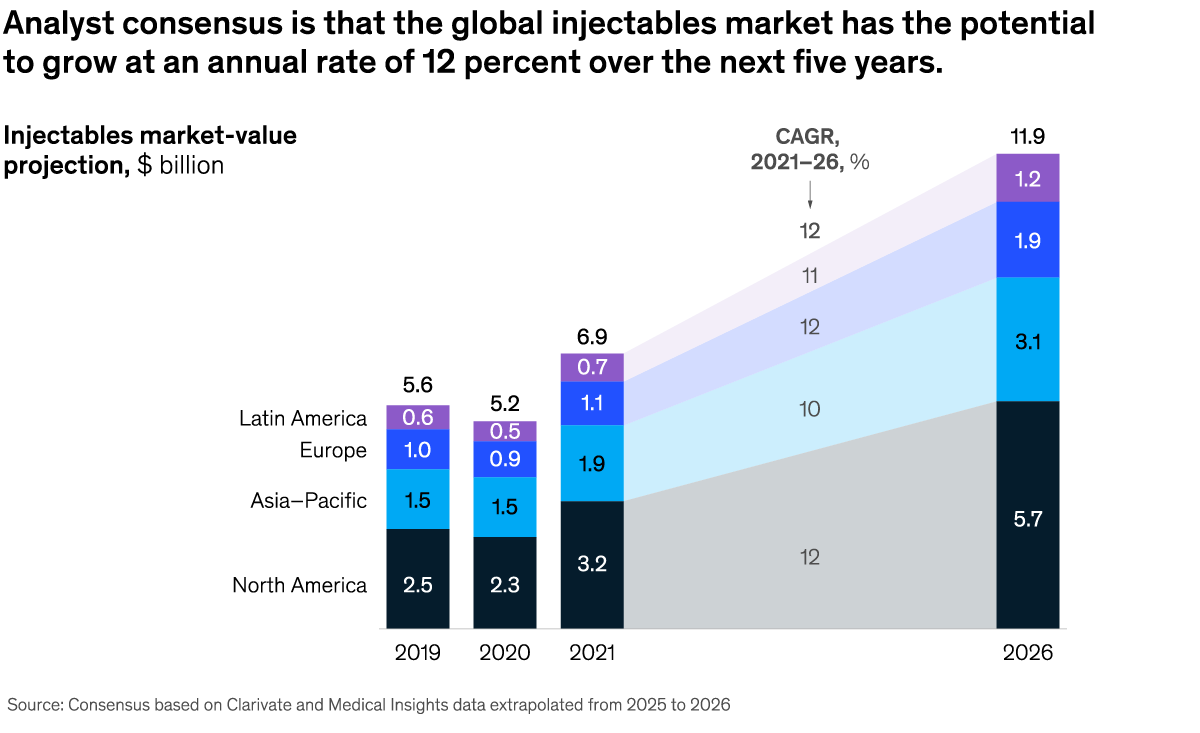
See more 



This week’s other select charts Wanted: Culturally competent doctors The price might be right We’re gonna need a bigger shovel Work smarter not harder 

Follow our thinking 



Share these insights Did you enjoy this newsletter? Forward it to colleagues and friends so they can subscribe too.
Was this issue forwarded to you? Sign up for it and sample our 40+ other free email subscriptions here.This email contains information about McKinsey’s research, insights, services, or events. By opening our emails or clicking on links, you agree to our use of cookies and web tracking technology. For more information on how we use and protect your information, please review our privacy policy. You received this email because you subscribed to The Week in Charts newsletter. Manage subscriptions | Unsubscribe Copyright © 2022 | McKinsey & Company, 3 World Trade Center, 175 Greenwich Street, New York, NY 10007
by "McKinsey Week in Charts" <publishing@email.mckinsey.com> - 03:05 - 29 Jan 2022 -
Always connect, never give up: An interview with Jason Wright
the Daily read
Go for your goals .
Share this email 



AN ARTICLE A DAY, PICKED BY OUR EDITORS 
Some leaders make it look easy—even when it’s not. Take Jason Wright, president of the NFL’s soon-to-be-renamed Washington Football Team (and a former McKinsey partner). You might not expect his path to entail a stint living in an extended-stay motel while he spent his first year and a half in the NFL “getting fired every other week.” Read the interview, part of McKinsey’s new My Leadership Journey series, for more on how he regained confidence, got through business school, and led an organization through crisis. His resonant reflections on everything from crafting your personal story to the importance of visible, diverse role models offer unique insight as Black History Month approaches. Check it out. — Torea Frey, managing editor, Seattle 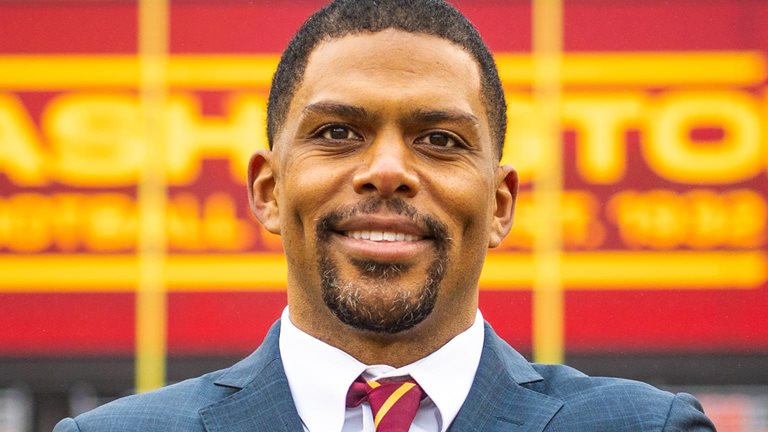
Always connect, never give up: An interview with Jason Wright As president of Washington’s football team, Wright is calling on his experiences as an NFL player, business school graduate, and McKinsey partner to change an entrenched culture. Go for your goals 

Quote of the Day “[Satya Nadella] actually went all the way back into [Microsoft’s] archives, to their original purpose statement, to say, ‘The root purpose of who we are hasn’t changed, but what does that mean for us going forward? How will we reimagine that for the future?,’ and made incredibly bold moves into cloud and pivoting the business, as well as on the cultural side” —Senior partner Carolyn Dewar, coauthor of CEO Excellence on one of the memorable moments she had in interviewing executives for the forthcoming McKinsey book 
Chart of the Day See today’s chart 
Also New 

The economic transformation: What would change in the net-zero transition A net-zero transition would entail a significant and often front-loaded shift in demand, capital allocation, costs, and jobs. Do things differently 


The state of grocery retail in India The grocery market in India has evolved considerably in the past decade. Here’s what you need to know about the changing face of demand, dynamics and disruption in the sector, and the implications for retailers and consumer-packaged-goods players alike. Read the report 


APIs: The secret ingredient for one company’s massive tech leap Emirates NBD’s Neeraj Makin and Saud Al Dhawyani discuss how APIs became central to their organization’s IT transformation. Enable new ideas 


Follow our thinking 



Share these insights Did you enjoy this newsletter? Forward it to colleagues and friends so they can subscribe too.
Was this issue forwarded to you? Sign up for it and sample our 40+ other free email subscriptions here.This email contains information about McKinsey’s research, insights, services, or events. By opening our emails or clicking on links, you agree to our use of cookies and web tracking technology. For more information on how we use and protect your information, please review our privacy policy. You received this email because you subscribed to the Daily Read newsletter. Manage subscriptions | Unsubscribe Copyright © 2022 | McKinsey & Company, 3 World Trade Center, 175 Greenwich Street, New York, NY 10007
by "McKinsey Daily Read" <publishing@email.mckinsey.com> - 06:41 - 28 Jan 2022 -
Note from Md Mohidul Islam to your Facebook Page Thailand SAP Business One
Could you please inform programs
by "Mohidul Islam" <mohidulislamtax@icloud.com> - 01:11 - 28 Jan 2022 -
Goodbye long wait times, hello medicine delivery. How healthcare has changed during the pandemic.
the Shortlist
Plus, My Rookie Moment on the power of mentorship .
Share this email 



Our best ideas, quick and curated | january 28, 2022 View in browser 
This week, we look at how the COVID-19 crisis is driving sweeping changes in healthcare. Plus, why more commuters around the world are choosing bikes, and former US chief performance officer Beth Markle on making capability building more accessible for frontline workers. 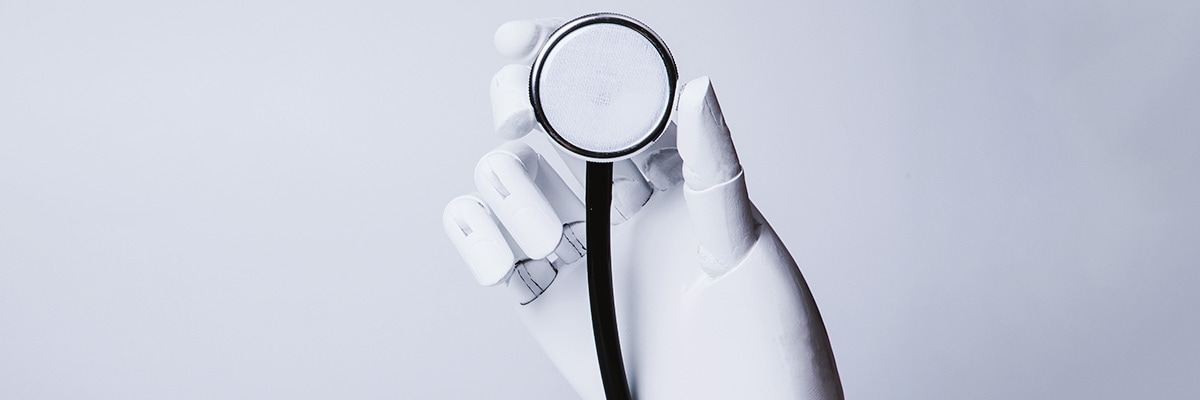
The continuing fight against COVID-19 is propelling big changes in healthcare, including welcome shifts to virtual care that can meet consumer needs. But this is a tall order, given the pandemic’s adverse effects on global health, from children to seniors. Kids in crisis. One of the most consequential outcomes of the pandemic has been to sharply increase behavioral and mental-health issues in kids and young adults. Dr. Kevin Churchwell, president and CEO of Boston Children’s Hospital, told McKinsey that during the pandemic, healthcare providers saw a shocking increase in the number of kids with these issues—treating 50 to 70 children per day, doubling or tripling the amount seen previously. Gen Z in need. McKinsey consumer surveys also illustrate the extent of the youth mental-health crisis, with one in four Gen Z respondents saying that they feel emotionally distressed. That’s almost double the levels reported by millennials and Gen X, and more than triple the levels reported by baby boomers. Although Gen Z respondents were more likely to report having a behavioral-health issue, they were also less likely to seek help. That makes it even more crucial for leaders, educators, and employers to support young people. These serious issues are propelling the industry to evolve to better meet the changing needs of patients, healthcare leaders tell McKinsey. The rise of virtual and home care, direct-to-consumer pharmacy start-ups, and new digital tools means that consumers have more ways than ever to make medical appointments, pay bills, and visit with providers. At the same time, consumer expectations for convenient, efficient healthcare have intensified as they have grown used to tech-enabled healthcare. In a recent podcast, Humana’s Alan Wheatley and Alignment Healthcare’s John Kao discuss how US Medicare patients are reacting to the shifts to virtual care. For instance, with telehealth becoming the norm, seniors are less tolerant of long wait times and expect more timely access to care, Kao said. Wheatley added that in this age of digital care, making healthcare data accessible to patients, providers, and insurers is critical. Another important trend is that more care is moving from “big-box settings” into homes, he noted. The in-home pharmacy. Technology is also driving changes in the $460 billion pharmacy sector. During the pandemic, consumers have clamored for the convenience of home delivery. Direct-to-consumer pharmacy start-ups make it possible for prescriptions and payments to be processed online, and medicines delivered a day later. At the same time, technology-driven innovations—such as virtual-care clinics—are also supporting the shift to home. For traditional pharmacies to keep up with the new crop of digital rivals, they’ll likely need to rethink their existing processes, technologies, and systems. Widening gaps. In lower- and middle-income countries, the pandemic has worsened gaps in healthcare systems. According to the World Health Organization, even prepandemic, nearly a third of the population in those countries had to travel more than two hours to access essential healthcare. Loss of healthcare workers to COVID-19 and the disruption of transportation has made matters even worse. But there is one bright spot: the growth in digital tools and technologies. McKinsey analyzed digital solutions in eight countries in Asia and Africa to learn how technology can improve countries’ responses to infectious-disease threats and strengthen primary healthcare. The analysis showed that partnerships between governments and digital-solutions providers can help projects scale up quickly. For example, a chatbot app launched by a start-up enabled more than 11 million symptom checks in South Africa. In addition, Vietnam partnered with a technology firm to develop an app in response to the pandemic; a quarter of the population has downloaded it. Improving healthcare systems may be difficult—but the world must be better prepared for the next pandemic. 
OFF THE CHARTS The new commuter is on a bike Around the world, open-air travel is booming. Nearly 70 percent of respondents in Asia, Europe, and North America said they were willing to hop on a bike, moped, or e-kickscooter for their daily commute, according to a consumer survey by the McKinsey Center for Future Mobility. Globally, most respondents would prefer to ride a bike (either traditional or electric). 
Check out our chart of the day here. 

INTERVIEW Making capability building accessible to all The problem with most capability-building programs, says Beth Cobert, COO of the Markle Foundation and a former US chief performance officer, is that “everybody sort of goes lockstep through them, whether they’re relevant to the person or not.” For frontline workers and individuals with less educational attainment, who may not have hours to devote to training, technology that breaks up material into smaller units can be a godsend. “Technology can help make programs more modular and bite-size, so that people can fit capability building into their lives,” Cobert explained in an interview with McKinsey. In addition, using insights from data to tailor learning to the individual can allow people to target the skills that will truly make a difference in their career, she added. 
MORE ON MCKINSEY.COM The role of ESG and purpose | Answering three questions about purpose and environmental, social, and governance issues can help leaders zero in on what matters most. The unsolved opportunities for cybersecurity providers | Organizations must use novel strategies and technology to fight increasingly sophisticated cyberthreats. For cybersecurity providers, the challenges and opportunities are numerous. Redefining corporate functions to better support strategy and growth | Striking the right balance between decentralized functions and centralized control starts with addressing the needs of business units. 
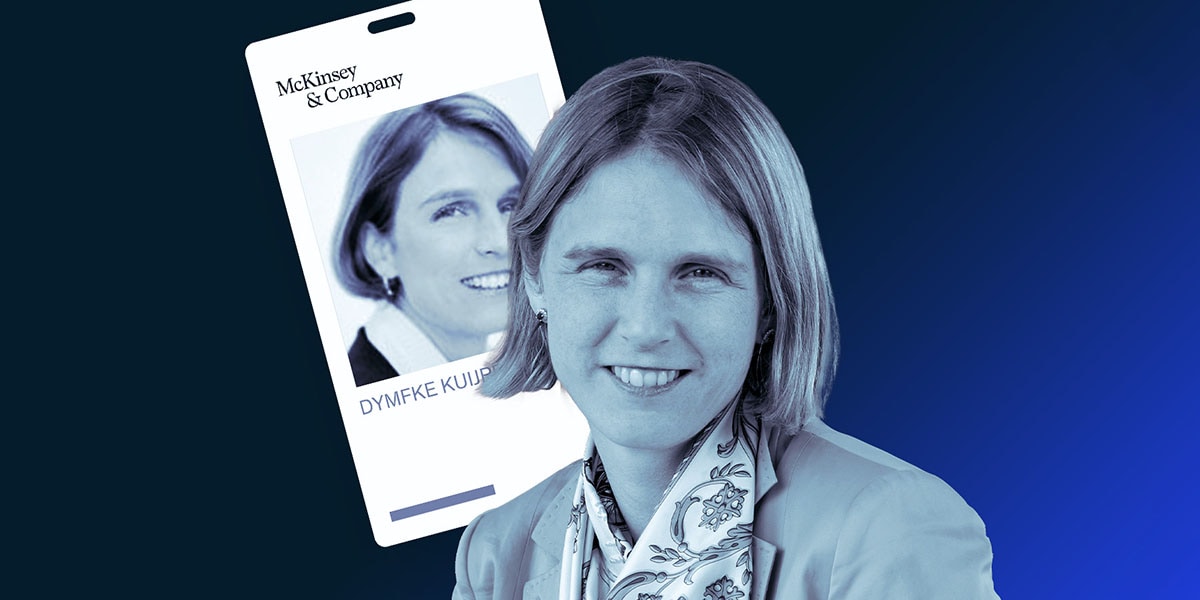
WHAT WE’RE DOING My Rookie Moment We’ve all been there. Early-career moments where we’ve stumbled on our way to finding success. It turns out that senior leaders at McKinsey have been there too. Episode five of My Rookie Moment focuses on mentorship, those moments when a trusted colleague helped them feel more confident, enabled them to grow and learn, and guided them around obstacles. Liz Hilton Segel recalled her first experience leading a discussion as a young professional among senior executives. Since she was reluctant, her manager at the time suggested that the manager go first, with Hilton Segel taking the reins after that. Hilton Segel observed how her manager, “rather than running from conflict during the discussion, actually leaned into it and had people express their different points of view.” That gave her the confidence to not be afraid if the people in the room disagreed. Instead, she would “elicit each of their points of view to get to a better answer,” together. For Dymfke Kuijpers, learning to amplify her strengths instead of focusing on her weaknesses was a defining moment in her career. The first time she ever worked as a project manager, she was so intent on doing everything perfectly that “it went absolutely nowhere,” Kuijpers said. At the end of the project, colleagues’ feedback on her leadership was “an endless list of what should have been done better,” leaving her feeling demoralized. Following the advice of a mentor, she decided to lead with her strengths. That enabled her to have a much more positive experience. “Don’t ever try to be perfect. Focus on the things you’re really good at and enjoy—amplify those,” Kuijpers said. “That gives you so much more joy and energy for yourself, for your teams, and for everyone around you,” she added. Alberto Chaia shared that a five-minute conversation was all it took to reignite his passion for solving problems and restore his self-confidence. At a meeting with a CEO, Chaia recalls, he was quiet and didn’t participate. Afterward, he approached the McKinsey colleague leading the meeting and offered a few of his ideas. “The senior leader replied, ‘Those are fantastic ideas. Why didn’t you mention them?’” Chaia said. “That conversation gave me so much confidence that completely changed my approach to the way I was participating in meetings.” — Edited by Belinda Yu Share this My Rookie Moment 



BACKTALK Have feedback or other ideas? We’d love to hear from you. 
Tell us what you think 

Follow our thinking 



Share these insights Did you enjoy this newsletter? Forward it to colleagues and friends so they can subscribe too.
Was this issue forwarded to you? Sign up for it and sample our 40+ other free email subscriptions here.This email contains information about McKinsey’s research, insights, services, or events. By opening our emails or clicking on links, you agree to our use of cookies and web tracking technology. For more information on how we use and protect your information, please review our privacy policy. You received this email because you subscribed to The Shortlist newsletter. Manage subscriptions | Unsubscribe Copyright © 2022 | McKinsey & Company, 3 World Trade Center, 175 Greenwich Street, New York, NY 10007
by "McKinsey Shortlist" <publishing@email.mckinsey.com> - 02:50 - 28 Jan 2022 -
As the fitness industry weighs new on- and off-site services, consumer relationships will be key
McKinsey&Company
No sweat .

Work it out The news • New year, new you? If you’re like so many of us who made New Year’s resolutions about fitness but haven’t quite lived up to those shiny new 2022 aspirations, you’re not alone. And as the pandemic continues, the safest place to work out may—still—be at home. So designing a space that you’ll want to get your sweat on in can be the extra boost of motivation so many of us need. [NYT] • An app a day. Fitness apps offer a convenient way to exercise—whether indoors or outdoors. Apps can level up your workout, but picking the best one might be tricky: in 2020, the iOS and Android app stores had 71,000-plus health-and-fitness apps available. Fitness experts say to look for apps that offer variety (for instance, varying workouts by intensity and length) or allow you to pair fun activities with exercise (say, TV watching with indoor biking). [WSJ] 
Our research shows that the market for health and wellness products and services is growing by 5–10% per year. 
Our insights • Going back to the gym. Fitness-tech apps raised an unprecedented $2 billion from investors in 2020, as gym goers turned to in-home workouts during the COVID-19 pandemic. However, many people are still yearning for traditional gyms and studios. In the US, 30% of customers visited the gym or studio at least once in the first two weeks of February 2021, while 70% of fitness consumers said they missed their gym as much as they missed family and friends. • A sense of togetherness. As the fitness industry shifts its focus from surviving the pandemic to finding new ways to thrive, gyms and fitness studios can build communities to meet consumers’ needs for belonging and support. For example, one UK gym started a virtual running club that allowed members to connect on social media and engage in healthy competition. See our analysis of four types of fitness consumers (from the “wellness enthusiast” to the “passive participant”) and what matters most to each. — Edited by Justine Jablonska Get to work(out) 
Was this forwarded to you? Sign up here. Or send us feedback — we’d love to hear from you. 

Follow our thinking 


This email contains information about McKinsey’s research, insights, services, or events. By opening our emails or clicking on links, you agree to our use of cookies and web tracking technology. For more information on how we use and protect your information, please review our privacy policy. You received this email because you subscribed to the On Point newsletter. Manage subscriptions | Unsubscribe Copyright © 2022 | McKinsey & Company, 3 World Trade Center, 175 Greenwich Street, New York, NY 10007
by "McKinsey On Point" <publishing@email.mckinsey.com> - 12:39 - 28 Jan 2022 -
How to brainstorm better
the Daily read
Look at it this way .
Share this email 



AN ARTICLE A DAY, PICKED BY OUR EDITORS 
Ever been in a meeting to brainstorm around the next big thing, but left with the feeling that what you’ve come up with is more of the same? Even with the best intentions, these sorts of meetings often aren’t as productive as they could be, with discussions that ultimately circle back to executive talking points. A new piece from McKinsey’s Bias busters series looks at why—and what you can do about it. Check it out for insight on “anonymous brainstorming” and more ways to structure effective sessions that unlock original ideas and honest discussion. — Emily Adeyanju, digital editor, New York 
Bias busters: A better way to brainstorm Structured conversation during brainstorming sessions removes some of the risks that can thwart honest discussion. Look at it this way 

Quote of the Day “There are a record number of open jobs in US manufacturing today. In October last year, that figure topped one million—the highest on record and more than the entire population of San Francisco.” —Asutosh Padhi, McKinsey managing partner, North America, in “Want to drive inclusive economic growth? Start with manufacturing” 
Chart of the Day See today’s chart 
Also New 

The net-zero challenge: Accelerating decarbonization worldwide Net-zero emissions can be achieved only through a universal transformation of seven energy and land-use systems. Here, we look at actions to accelerate decarbonization. Move toward stability 


COVID-19: Implications for business Tackling the other big global crisis. See the update 
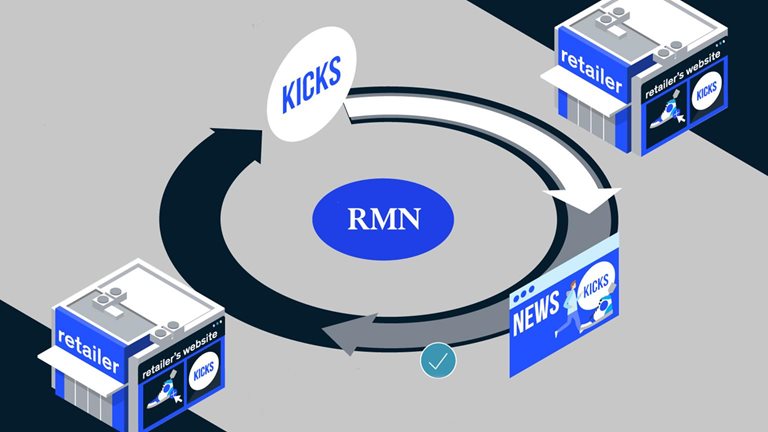

The rise of commerce media Commerce media is transforming advertising by using data to close the transaction loop. Explore the infographic 


Follow our thinking 



Share these insights Did you enjoy this newsletter? Forward it to colleagues and friends so they can subscribe too.
Was this issue forwarded to you? Sign up for it and sample our 40+ other free email subscriptions here.This email contains information about McKinsey’s research, insights, services, or events. By opening our emails or clicking on links, you agree to our use of cookies and web tracking technology. For more information on how we use and protect your information, please review our privacy policy. You received this email because you subscribed to the Daily Read newsletter. Manage subscriptions | Unsubscribe Copyright © 2022 | McKinsey & Company, 3 World Trade Center, 175 Greenwich Street, New York, NY 10007
by "McKinsey Daily Read" <publishing@email.mckinsey.com> - 06:28 - 27 Jan 2022 -
New Year's is great. New features are better.
Put Your Logo To Work
Celebrate with powerful new features, ready to work for you.

Fiverr Business highlights And so it all begins…again.
This year may not have brought all the changes we wanted, but your business is your opportunity to break out of this cycle the world can’t shake.
With a brand new selection of our very best talent and upgraded features to better answer your business needs, your next year on Fiverr Business is already set up for success.

Success is trending.
Another shortcut to success? Seeing what other businesses are searching for. Tap into the trends most likely to bring more business by keeping tabs on our new Trending tab. Hot right now: all things NFTs.
See for yourself >
Explore our top NFT services: Damian3d5
NFT Artist
Partnered with Wicked Bone Club and Angry Pitbull ClubAljonski22
Pixel Artist
Partnered with Cosmic Wyverns NFT Collection

Navigating our new normal
By chance or by choice, the world has never been more ready to embrace a brave new normal. But there’s a smart way to be bold with your business – and it starts here.
Everything you need to turn a new page, all in a few pages. From new and relevant content creation to growing your entire online presence, we’re here to help you beat every challenge in these ever-changing times. And we even threw in some extra tips just to brighten up your business plans for the year.
Read the way >
Your monthly dose of inspiration Get inspired with these recent design services ordered by businesses on Fiverr. Looking for more inspiration?
Check out Fiverr Discover >
Stay in touch As a Fiverr Business member, you have exclusive access to a dedicated Business Success Manager. Reach out to them to get matched with the right freelancer, or for any other business need.
For any technical issues, contact Support.




Privacy Policy | Support | Invite a Friend | Get Inspired
This email was sent to you by Fiverr International Ltd.
You are receiving this email because you signed up for Fiverr.
If you wish to unsubscribe from all future emails, please click here
Fiverr International Ltd. | 38 Greene St. | New York, NY 10013, USA

by "Fiverr" <no-reply@fiverr.com> - 10:33 - 27 Jan 2022 -
What a CEO looks like
Intersection Subject Line
Put aside the stereotypes .
Share this email 



DELIVERING ON DIVERSITY, GENDER EQUALITY, AND INCLUSION 
In this issue, we look at Britain’s engineers, what people typically expect when they meet a CEO, and how the Sámi of Northern Europe are leading climate action. THE VIEW 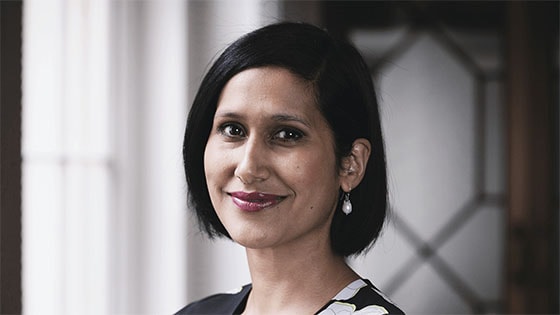
“A lot of people have to rapidly rearrange their facial expression when they ask me what I do, and it turns out that I’m the chief exec.”
— Dr. Hayaatun SillemDr. Hayaatun Sillem is the CEO of the UK’s Royal Academy of Engineering—the first woman and the first person of color to serve in that role. In a recent episode of the McKinsey Global Institute’s Forward Thinking podcast, she reflects on the evolving role of engineering in a dematerialized world, engineering’s vital role in sustainability, and how to boost the number of British women in the field. Here are four highlights from a multifaceted discussion. People had to check themselves. When Dr. Sillem became head of the Royal Academy of Engineering, many people meeting her for the first time were surprised. In Dr. Sillem’s words: “There were a lot of people who I think were quite perplexed at the fact that I was the chief exec of the Royal Academy of Engineering. Clearly not what they were expecting.” In her experience, being different built empathy. Growing up, Dr. Sillem was “very aware of being different.” As she explains, “My mother is half Indian, half English. And my father is Cape Malays. He comes from South Africa, but his ancestors probably came primarily from Indonesia. Cape Malays is a mixed ethnic group in itself. And then my name, Hayaatun, is a sort of Indonesian version of an Arabic name.” (The word حياة, hayat, means “life” in Arabic.) For a long time, she tried to minimize certain aspects of her identity and behave in ways she thought would make other people feel comfortable. It was only when she was in her 30s that she realized that she had been “knocking the corners off” herself. Dr. Sillem brings those life experiences to the work she is now doing on diversity and inclusion—and she feels that they’ve made her a better leader. “I always think that differentness is a good basis for developing empathy, which I think is a really important part of good leadership,” she says. (That’s a view she shares with many LGBTQ+ business leaders.) 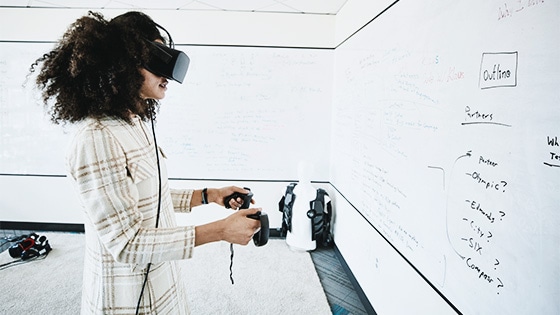
The UK needs more diverse engineers. Just under 15 percent—that’s the share of British engineers who are women. Dr. Sillem points out that if the UK continues on its current trajectory, it will take until 2085 to achieve gender parity in the people pursuing engineering degrees. As she puts it: “Engineers play a very important role in shaping society. They need to reflect society.” That helps ensure that all the infrastructure, products, and services that engineers develop are truly inclusive, and that the benefits are equitably distributed. Engineering also represents the future of work: McKinsey projects that across countries (including the UK), demand for tech design, engineering, and maintenance will substantially rise in the wake of the COVID-19 pandemic. In fact, over the next decade, the greatest increase in labor demand will be for these and other technological skills. This makes it even more essential to correct stereotypes about what engineers look like, what they wear to work (it’s not all PPE), and what they do. Enter “This is Engineering,” a campaign launched by the Royal Academy of Engineering to help change people’s perceptions—starting with actual images (along with short videos). The goal is to show young Britons all the possibilities that engineering holds. Among the campaign’s key messages: “Being green is engineering.” 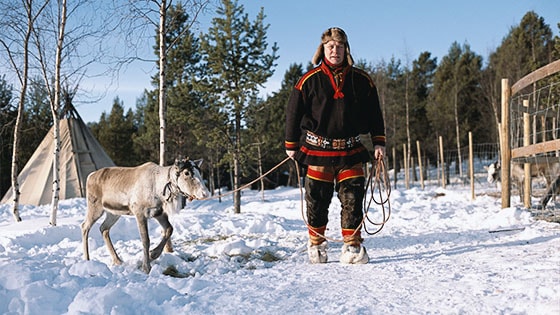
Indigenous Europeans are leading climate innovation. Dr. Sillem is chair of judges of the St Andrews Prize for the Environment, an international initiative that recognizes innovative responses to environmental challenges. The 2021 winner: the Snowchange Cooperative. The organization, a network of Indigenous and local communities around the world, focuses on restoring and rewilding landscapes in Finland under the leadership of the Indigenous Sámi people—blending their traditional knowledge with the latest science, and drawing on Snowchange’s relationships with the Intergovernmental Panel on Climate Change and other leading scientific bodies. As Dr. Sillem explains, Snowchange is “doing a really thorough, evidence-based set of activities, which we believe have the potential to drive systemic change and impact at scale for both climate and communities.” As Snowchange itself says, “Our stories bring the land alive—they are very powerful stories.” (Pictured above: a Sámi reindeer breeder. Rapid climate change is threatening Arctic reindeer—and reindeer herding, a traditional Sámi livelihood.) Dr. Sillem takes on another misconception: “Sometimes people think about projects that focus on Indigenous communities as being things that happen a long way from Europe. This is happening right on our doorstep. It has huge potential for climate gains, but there’s also a lot that we can learn about how to do this in a more impactful way across the globe.” — Edited by Julia Arnous, an editor in McKinsey’s Boston office 

Follow our thinking 



Share these insights Did you enjoy this newsletter? Forward it to colleagues and friends so they can subscribe too.
Was this issue forwarded to you? Sign up for it and sample our 40+ other free email subscriptions here.This email contains information about McKinsey’s research, insights, services, or events. By opening our emails or clicking on links, you agree to our use of cookies and web tracking technology. For more information on how we use and protect your information, please review our privacy policy. You received this email because you subscribed to the Intersection newsletter. Manage subscriptions | Unsubscribe Copyright © 2022 | McKinsey & Company, 3 World Trade Center, 175 Greenwich Street, New York, NY 10007
by "McKinsey Intersection" <publishing@email.mckinsey.com> - 01:06 - 27 Jan 2022 -
Has your car-buying experience been pleasant or painful? These trends will shape the future of car sales.
McKinsey&Company
Time to accelerate .

Buckle up The news • No supply, much demand. Auto sales were historically low in 2021. Not because consumers didn’t want to buy cars; demand remained high. But there just weren’t enough cars available for sale, thanks to the global microchip shortage that continues even today, forcing carmakers to limit their outputs. Some sales staff have resorted to showing customers images of their potential purchases on computer screens, since inventory has plummeted. [Bloomberg] • Forget the showroom. Step into the “brand experience center” instead, where you may find one or all of the following: a fancy restaurant, a library, a café, a teahouse. Oh yeah, and cars. The newest iteration of a car sales floor features a low-pressure, soft-sell approach, designed to appeal to consumers craving personalized and immersive experiences. [NYT] 
Customers are no longer buying the latest car model … but a smart device on wheels where they can work, socialize, and be entertained—and which will constantly improve. 
Our insights • A new battleground. In the not-too-distant past, car manufacturers relied on their engineering prowess—outstanding reliability and exceptional driving performance—as a competitive edge. But a new battleground has emerged: customer experience. To make customer experience the driving force for every department, automotive CEOs should appoint a chief experience officer (CXO), a position that already exists at many companies known for their strong customer focus. • ‘A new lifestyle.’ Car shoppers aren’t just choosing a vehicle; they’re “buying a ticket to a new lifestyle,” the CEO of one electric-car maker has said. Consumers still want cars that drive well and look good, but these are now bare minimums. By 2030, flexible ownership models will allow people to lease vehicles and buy services through short-term subscriptions. Customers will also expect a smooth, superfast integration of all the digital services they use, including connectivity, mobility, entertainment, and hospitality. Read more about the trends that will shape the next decade of car buying. — Edited by Justine Jablonska Get in the driver’s seat 
Was this forwarded to you? Sign up here. Or send us feedback — we’d love to hear from you. 

Follow our thinking 


This email contains information about McKinsey’s research, insights, services, or events. By opening our emails or clicking on links, you agree to our use of cookies and web tracking technology. For more information on how we use and protect your information, please review our privacy policy. You received this email because you subscribed to the On Point newsletter. Manage subscriptions | Unsubscribe Copyright © 2022 | McKinsey & Company, 3 World Trade Center, 175 Greenwich Street, New York, NY 10007
by "McKinsey On Point" <publishing@email.mckinsey.com> - 10:09 - 26 Jan 2022 -
Author Talks: The made-up words that make our world
the Daily read
Find the right words .
Share this email 



AN ARTICLE A DAY, PICKED BY OUR EDITORS 
New words are constantly entering our lexicon—to take just one example, in 2021, Merriam-Webster added entries for deplatform, whataboutism, and dozens of other new terms. This is common, and additions often are based on the state of the world, drawing from online culture, politics, food, science, and technology. While language is a reflection of our culture at any given time, words do not always capture a specific feeling or emotion, which is why John Koenig wrote his own, The Dictionary of Obscure Sorrows, to fill the gaps in our language of emotion. "We allow our words to define us, but I think the natural order of things is that we define words," he says. Don't miss this compelling conversation from McKinsey’s Author Talks series on the ever-evolving nature of language; whether you’re nyctous or feeling hem-jawed (some of Koenig’s favorite words), this one’s for you. — Joyce Yoo, digital editor, New York 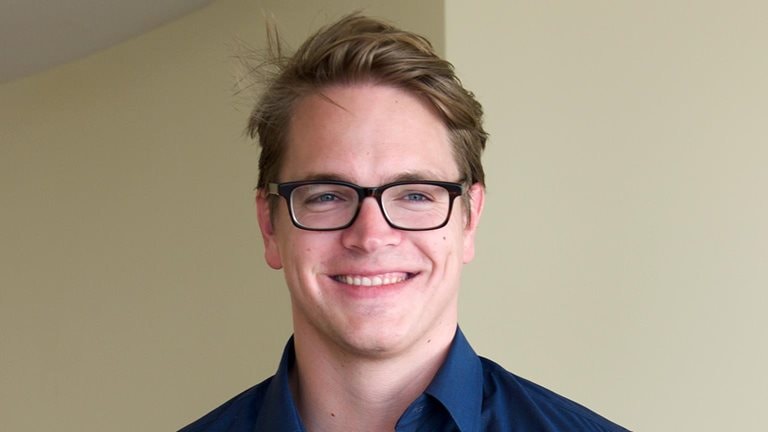
Author Talks: The made-up words that make our world Walking through an empty office. Moving out of a childhood home. Struggling to write something original. Experiences like these often lack the perfect word, so John Koenig spent more than a decade writing his own dictionary. Find the right words 

Quote of the Day “The last two years have indeed felt like performance sports for many of us—this is the new reality. We experienced a major shift comparable to the 1920s when Coco Chanel liberated women from corsets.” —David Allemann, cofounder, On, in “Sporting goods 2022: The new normal is here” 
Chart of the Day See today’s chart 
Also New 

Six characteristics define the net-zero transition Our analysis of the net-zero transition suggests that it would be universal, significant, and front-loaded, with uneven effects on sectors, geographies, and communities, even as it creates growth opportunities. Look at the numbers 


High coking coal prices provide glimpse into steelmaking’s future Changes to coking coal and coke markets could lead to higher steel prices, an acceleration of the steel industry’s green transition, and wider price differentials for low-grade iron ore. Understand the trend 


Beyond financials: Helping small and medium-size enterprises thrive Small and medium-size enterprises are facing compounding challenges. Governments and other institutions worldwide are launching programs to provide them the advisory support needed to meet the moment. Support companies through the pandemic 


Follow our thinking 



Share these insights Did you enjoy this newsletter? Forward it to colleagues and friends so they can subscribe too.
Was this issue forwarded to you? Sign up for it and sample our 40+ other free email subscriptions here.This email contains information about McKinsey’s research, insights, services, or events. By opening our emails or clicking on links, you agree to our use of cookies and web tracking technology. For more information on how we use and protect your information, please review our privacy policy. You received this email because you subscribed to the Daily Read newsletter. Manage subscriptions | Unsubscribe Copyright © 2022 | McKinsey & Company, 3 World Trade Center, 175 Greenwich Street, New York, NY 10007
by "McKinsey Daily Read" <publishing@email.mckinsey.com> - 06:17 - 26 Jan 2022 -
What’s next for fitness
Re:think
Postpandemic fitness The pandemic created a kind of forcing mechanism for fitness—a chance for people and fitness companies to think through everything from what makes for a better workout to how people can live better, happier, healthier lives. With many gyms and studios having been forced to close, reduce schedules, or trim offerings, this rethink of the future of fitness is happening in any setting where people move, whether that’s outdoors, at home, or even at work.
People have always had this ambition to live healthier lives than they actually do. Most of the time, the pressures of life and a very human lack of discipline get in the way. For some people, the pandemic removed a number of those pressures: there’s research showing that, in general, people have exercised more than usual during the pandemic.
That’s given a push to those aspiring to help people move—gyms, of course, but also app developers, apparel companies, wellness companies, and anyone else involved in the business of fitness. That’s a big change. I think it’s fair to say that up until about ten years ago, fitness was a strong underperformer across consumer sectors. The attitude was, “You want to move more? Here’s the gym; just get your butt in and figure it out.” The product was poorly aligned with what most people needed, so many lost their motivation just a few days or weeks after deciding to commit to a new routine or activity. The sector’s strength was the importance of health and movement to people, not the quality of the offering.
That’s been changing for the past decade or so. There’s been much-needed innovation and much more of a design- and consumer-oriented focus. Providers have spent a lot of effort thinking through all the different ways they can help people move. The pandemic pushed this forward even further. We’re clearly headed toward a future of hybrid, diverse routines and a wide range of high-quality, exciting fitness options. People can go to a gym. They have dozens of different ways to work out from home. I’ve even seen fitness finding its way into the office, where teams encourage members to work out two or three times a week as a way of bringing their best selves to work.
Consumers like all these choices and variety. People don’t return to the same restaurant all the time, even if they love it—they like dining out elsewhere, creating a rich mix. Today’s fitness routines are similar, composed of many different things consumers enjoy doing. Each helps to create a habit that can overpower our usual inertia.
Why should people have just one fitness outlet? While many individual providers will argue that their solution is going to capture the market, I think fitness providers should be asking themselves this question: What is my role in a consumer’s more diverse routine, and how can I deliver on that better than anyone else? Let’s take gyms as an example. Yes, they offer the equipment and space needed to move, but this is less of an advantage now that so many consumers have weights and yoga mats at home. A more unique offering is that gyms can be an amazing “third place,” neither office nor home. If Starbucks can be a third place, you better believe that gyms can: the third place where people create what they call “my moment of the day.” Gyms have been delivering on this promise for decades. By focusing on making that moment a great experience, gyms can have an integral place in the mix, along with outdoor and home-based workouts, apps, data trackers, and all the other options.
of fitness consumers report missing the gym as much as they miss family and friends during the pandemic
In the end, I think most companies should try to excel at what they really do well and enjoy their piece of the consumer’s total spending, which will grow if the whole industry offers excellent, innovative options. These companies share a common goal: let’s help humans move more and be healthier. Yes, they compete against each other, but they are also partners in collectively helping people to live healthier and more active lives.
ABOUT THE AUTHOR
Eric Falardeau is a partner in McKinsey’s Montreal office.
MORE FROM THIS AUTHOR
Sweating for the fitness consumer
Fitness customers’ habits have evolved during the COVID-19 pandemic, offering fitness-industry providers the opportunity to reexamine their value propositions and target specific segments.
The business of fitness: Building the Tone House brand
Digital fitness solutions aren’t going away in the postpandemic era—but neither are gyms, says Shaun Robert Jenkins, head coach at Tone House, New York City’s fast-growing fitness studio.
IN TWO WEEKSMiklos Dietz on ecosystems
Ecosystems may be the most powerful force in business, and their influence on company success is growing.
This email contains information about McKinsey’s research, insights, services, or events. By opening our emails or clicking on links, you agree to our use of cookies and web tracking technology. For more information on how we use and protect your information, please review our privacy policy.
You received this email because you subscribed to our McKinsey Quarterly alert list.
Copyright © 2022 | McKinsey & Company, 3 World Trade Center, 175 Greenwich Street, New York, NY 10007
by "McKinsey Quarterly" <publishing@mail.mckinsey.com> - 03:01 - 26 Jan 2022 -
Sandeep K shared the folder "Sandeep" with you in Canva
Sandeep K shared the folder "Sandeep" with you in Canva
It's easy to organise designs and documents in Canva Sandeep K shared the folder "Sandeep" with you in CanvaYou received this email because Sandeep K shared a folder with you. If this was sent to you by mistake, please contact support. 
Made for you with  from Canva
from Canva
Canva®, 110 Kippax St, NSW 2010, Australia
by "Canva" <no-reply@canva.com> - 10:44 - 25 Jan 2022 -
Feeling burned out? You’re not alone. Here’s what companies are doing to help.
McKinsey&Company
Take care .

Bounce back The news • Take a break—really. Over the past two years, employees have repeatedly postponed vacation plans due to COVID-19 and its variants. Frazzled and burned-out workers are not just bad for company morale but also for the bottom line, executives are realizing. Some are now requiring their staff to take vacation. For instance, the CEO of one tech company rolled out a policy called “Operation Chillax,” which ordered workers to take a week off. Other leaders have implored staff to take regular breaks during the year. [NYT] • Spotlight on sabbaticals. To prevent burned-out employees from leaving, employers are sponsoring sabbaticals, which foster increased creativity and loyalty to the company, they say. In 2019, only 5% of employers offered sabbaticals. Recently, however, several prominent banks (along with smaller firms) have begun offering them too. One manager says sabbaticals allow employees who are considering other job opportunities to be sure that “if they leave, they leave for the right reasons.” [WSJ] 
“Instead of focusing on productivity, focus on purpose, cultivate compassion, and give employees the agency to make decisions.” 
Our insights • ‘Safe rooms.’ Since the start of the pandemic, nearly half of employees surveyed by McKinsey have reported burnout. But by improving psychological resilience, we can also improve our physical resilience to be able to tackle whatever comes next, says Dr. Amit Sood, a leading expert on well-being. Companies can prevent and treat burnout by, for example, setting up safe rooms—spaces for honest conversations where employees can talk about issues without judgment—and offering services such as mindfulness programs, weight-loss coaching, and telecare for mental health. • ‘Kind attention.’ During the pandemic, as social relationships have become strained, assuming that everyone is struggling in some way (a practice called kind attention) can strengthen connections, says Dr. Sood. Having that perspective can produce a sense of empathy. In turn, “people who are compassionate and caring tend to learn skills better and become more competent.” Read the full interview to learn more strategies for battling burnout and increasing psychological resilience. — Edited by Katherine Tam Fight burnout 
Was this forwarded to you? Sign up here. Or send us feedback — we’d love to hear from you. 

Follow our thinking 


This email contains information about McKinsey’s research, insights, services, or events. By opening our emails or clicking on links, you agree to our use of cookies and web tracking technology. For more information on how we use and protect your information, please review our privacy policy. You received this email because you subscribed to the On Point newsletter. Manage subscriptions | Unsubscribe Copyright © 2022 | McKinsey & Company, 3 World Trade Center, 175 Greenwich Street, New York, NY 10007
by "McKinsey On Point" <publishing@email.mckinsey.com> - 10:10 - 25 Jan 2022 -
The net-zero transition: What it would cost, what it could bring
the Daily read
Build a green future .
Share this email 



AN ARTICLE A DAY, PICKED BY OUR EDITORS 
What economic and societal adjustments would need to be addressed to achieve a net-zero emissions transition? The nature and magnitude of that transition would mean that all countries and all sectors could be affected, directly or indirectly, and with governments and companies around the globe making net-zero pledges, it’s an opportune time to consider what it would take to fulfill those ambitions. A comprehensive new report—available as a free download—dives deep, estimating the changes in demand, capital allocation, costs, and jobs, to 2050, for sectors that produce about 85 percent of overall emissions, while also assessing economic shifts for 69 countries. From the six key features of the economic transformation to actions stakeholders can take, you don’t want to miss this important research. And sign up for a related webinar if you’d like even more insight: it's slated for Tuesday, February 1, at 11 AM EST. — Torea Frey, managing editor, Seattle 
The net-zero transition: What it would cost, what it could bring Governments and companies worldwide are pledging to achieve net-zero emissions of greenhouse gases. What would it take to fulfill that ambition? Build a green future 

Quote of the Day “CEOs are going to have to set direction. They’re going to have to align organizations. They’re going to have to mobilize leaders. They’re going to have to deal with boards. They’re going to have to manage stakeholders, and they’re going to have to manage themselves in ways that are excellent through all of those trends.” —Senior partner Scott Keller, coauthor of forthcoming McKinsey book CEO Excellence, in a conversation on what separates the best CEOs from rest from McKinsey’s Author Talks series 
Chart of the Day 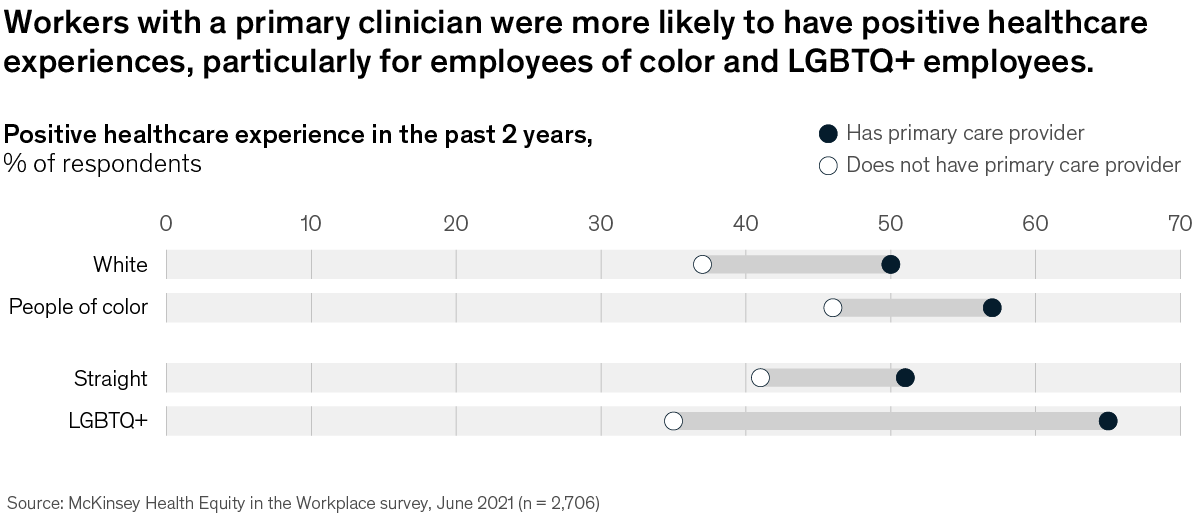
See today’s chart 
Also New 

Work is changing—this will help you prepare These McKinsey Organization Blog posts, focused on the future of work, have proven helpful for readers and their organizations. Get ready 


CIO perspectives on leading agile change As agility gains ground, CIOs from the banking and telecom industries came together to discuss challenges and lessons learned from leading agile transformations. Learn from leaders 


The McKinsey Crossword: Memoirs of Multimillionaires | No. 60 Sharpen your problem-solving skills the McKinsey way, with our weekly crossword. Each puzzle is created with the McKinsey audience in mind, and includes a subtle (and sometimes not-so-subtle) business theme for you to find. Answers that are directionally correct may not cut it if you’re looking for a quick win. Play now 


Follow our thinking 



Share these insights Did you enjoy this newsletter? Forward it to colleagues and friends so they can subscribe too.
Was this issue forwarded to you? Sign up for it and sample our 40+ other free email subscriptions here.This email contains information about McKinsey’s research, insights, services, or events. By opening our emails or clicking on links, you agree to our use of cookies and web tracking technology. For more information on how we use and protect your information, please review our privacy policy. You received this email because you subscribed to the Daily Read newsletter. Manage subscriptions | Unsubscribe Copyright © 2022 | McKinsey & Company, 3 World Trade Center, 175 Greenwich Street, New York, NY 10007
by "McKinsey Daily Read" <publishing@email.mckinsey.com> - 07:04 - 25 Jan 2022
